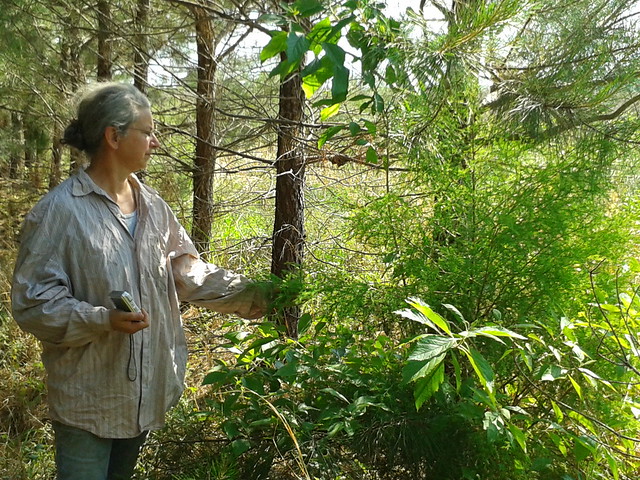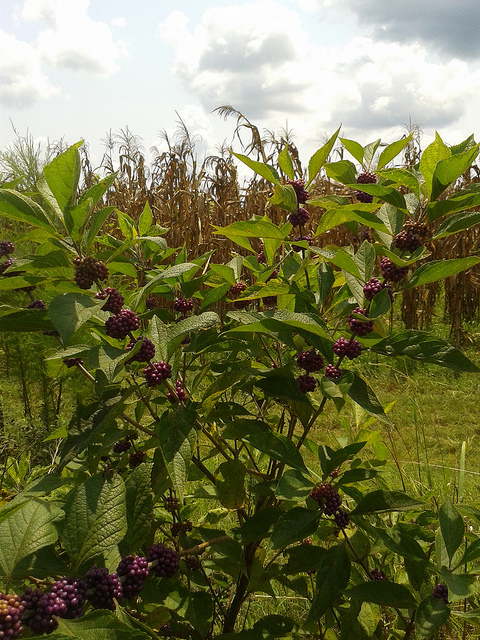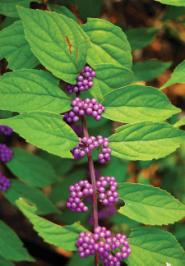You can eat beautyberries now, but they will be riper in a few weeks.
![[Beautyberries, Callicarpa americana]](http://www.okraparadisefarms.com/pictures/2025-09-14--beautyberries/20250914_125617.jpg)
Beautyberries, Callicarpa americana
They’re no longer mealy, and they have some flavor. They’re ripe enough to be made into jelly.
But in a few weeks they’ll be in full flavor. Even better then for eating or wine-making.
Callicarpa americana is native to the U.S. southeast, from Maryland to east Texas, plus Mexico and parts of the Carribean.
No, it’s not the same as pokeweed, which Continue reading
![[Beautyberry fruit setting, 2025:06:15 10:36:03]](http://www.okraparadisefarms.com/pictures/2025-06-15--beautyberry/20250615_103603.jpg)
![[Beautyberry (Callicarpa americana)]](http://www.okraparadisefarms.com/pictures/2022-05-29--maypop-cherry-blueberry-fig-beautyberry/20220529_191222.jpg)
![[Halberd-leaf rosemallow, Yellow Dog]](http://www.okraparadisefarms.com/pictures/2021-06-12--rosemallow-yellow-dog-beautyberry-rain-lily/20210612_074654.jpg)
![[Honeybun and Nervous Nellie in the beautyberry bathtub]](http://www.okraparadisefarms.com/pictures/2020-10-22--dogs-beautyberry-bath/20201022_191346.jpg)
![[Beautyberry with boats, bananas, and wood fire]](http://www.okraparadisefarms.com/pictures/2020-10-04--beautyberry-banana-fire/many.jpg)



